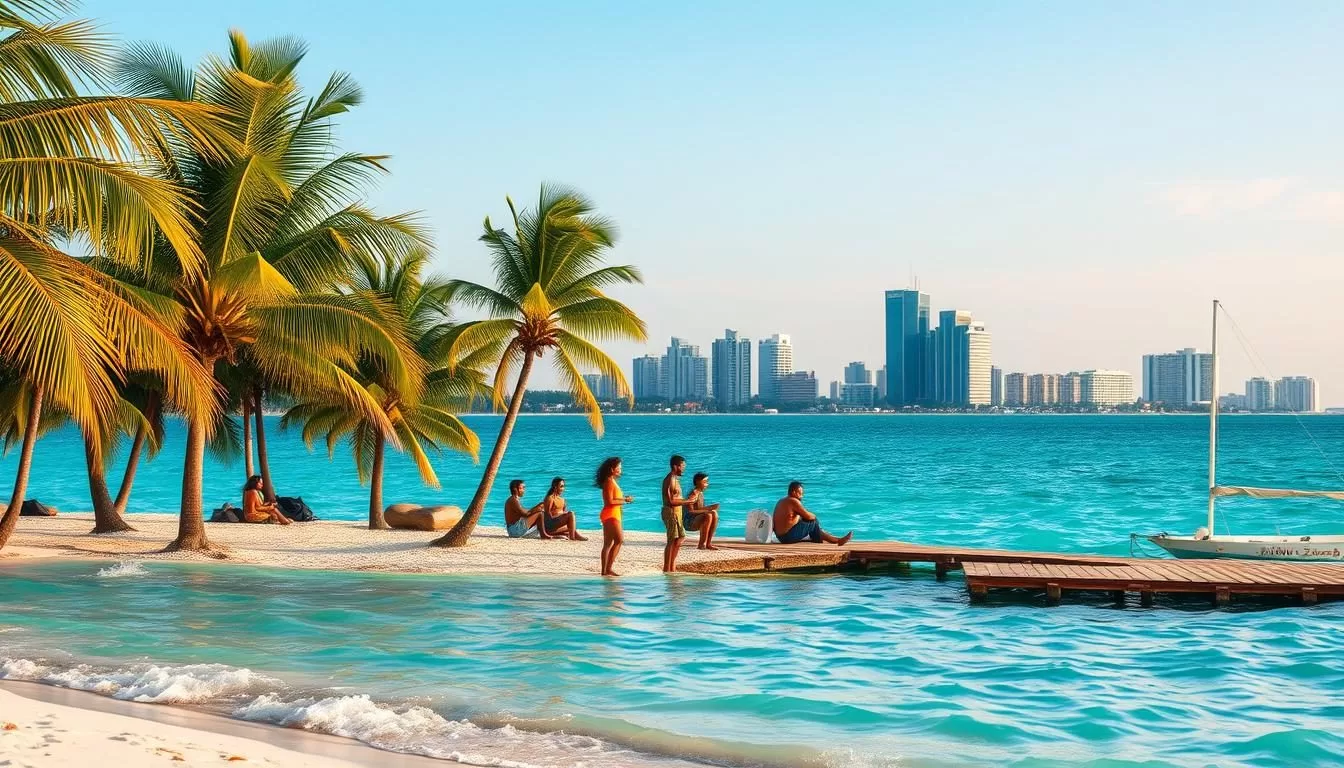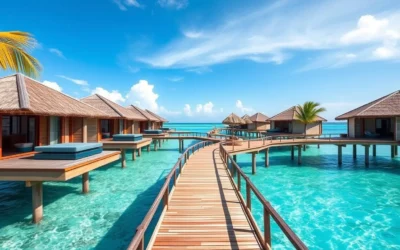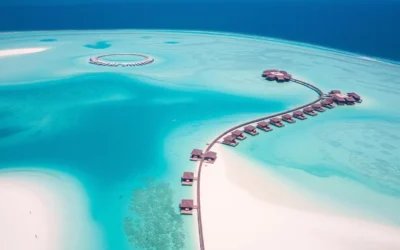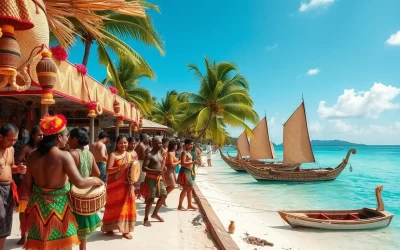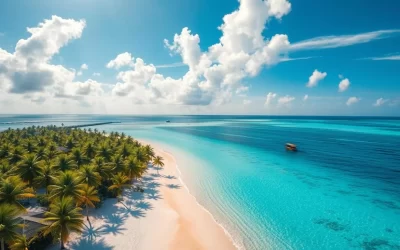✓ Accommodations ✓ Flights ✓ Rental Cars ✓ Tours & Activities
The Maldives boasts a rich linguistic tradition, deeply rooted in its culture and history. At its core is Dhivehi, the national language that reflects the island’s unique identity. Written in the Thaana script, Dhivehi has evolved over centuries, absorbing influences from Arabic and other languages.
English plays a significant role in this island nation, especially in tourism and education. It is commonly used in higher learning and international communication, ensuring visitors feel welcome. This blend of languages offers a fascinating glimpse into the Maldives’ global appeal.
This guide explores the origins, dialects, and cultural significance of these languages. Whether you’re planning a visit or simply curious, understanding this linguistic landscape will deepen your appreciation for the Maldives.
Introduction to Maldives’ Linguistic Heritage
The linguistic heritage of this island nation reflects its vibrant cultural tapestry. At its core lies Dhivehi, a language with roots in the ancient Indo-Aryan family. This connection highlights the deep historical ties that shape the way people communicate today.
Over centuries, Dhivehi has evolved, absorbing influences from neighboring regions. Its development mirrors the country’s journey through time, blending traditions with modern needs. This evolution is evident in the diverse dialects spoken across the islands.
Historical names and cultural exchanges have left their mark on the language. These influences are not just linguistic but also reflect the nation’s broader heritage. For example, Arabic and English have become integral to daily life, especially in education and tourism.
Understanding this linguistic landscape offers a glimpse into the country’s identity. It’s a story of resilience, adaptation, and cultural pride. As you explore further, you’ll see how language continues to shape the nation’s narrative.
| Language | Origin | Usage |
|---|---|---|
| Dhivehi | Indo-Aryan | National communication |
| English | Global influence | Tourism and education |
| Arabic | Religious roots | Mosques and schools |
The Historical Evolution of Maldivian Languages
The evolution of language in this island nation tells a story of cultural shifts and historical milestones. From its early roots to modern times, the way people communicate has been shaped by religion, trade, and external influences.
Buddhist and Early Influences
In the early days, the region was influenced by Buddhist traditions. Contact with South Asian civilizations played a key role in shaping the local language. Early inscriptions and literary works, such as the Lōmāfānu, provide evidence of this period.
These writings highlight the importance of language in recording history. They also show how early interactions with neighboring cultures left a lasting impact. Over time, these influences became deeply embedded in the way people spoke and wrote.
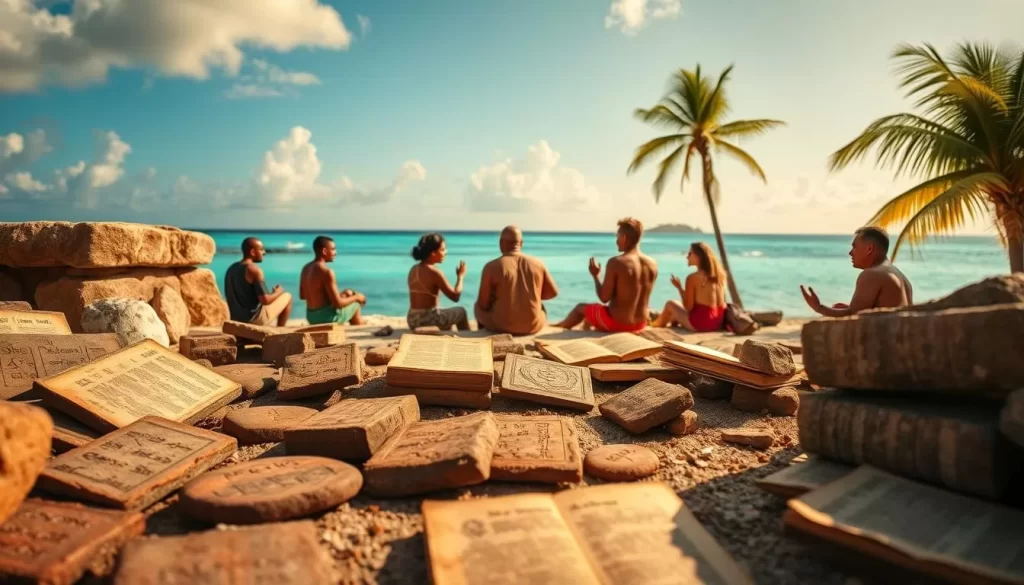
Transition to Islamic Era
The 12th century marked a turning point with the arrival of Islam. This shift brought significant changes to the language, including the introduction of the Thaana script. Historical figures and events during this time played a crucial role in shaping the nation’s linguistic identity.
Arabic became an important part of daily life, especially in religious and educational contexts. This transition reflects how language evolves to meet the needs of its people. Today, these changes continue to influence the way the nation communicates.
Overview of the Official Language: Dhivehi
Dhivehi stands as the cornerstone of communication in this island nation, reflecting its cultural identity. It is the primary language used in government, education, and daily interactions. Over 350,000 people speak Dhivehi globally, with significant communities in India and Sri Lanka.
One of the most distinctive features of Dhivehi is its Thaana script. This script is written from right to left, a unique characteristic that sets it apart. The Thaana script evolved from the ancient Dhives Akuru, adapting over centuries to meet modern needs.
The development of the Thaana script mirrors the nation’s history. Introduced in the 12th century, it replaced older scripts and became the standard for written communication. Today, it is taught in schools and used in all official documents, ensuring its preservation.
Language academies and educational initiatives play a crucial role in maintaining Dhivehi’s standards. These efforts ensure that the language continues to thrive, even as English gains prominence in schools. The script’s evolution reflects centuries of cultural adaptation and resilience.
Understanding Dhivehi and its script offers a glimpse into the nation’s heritage. From its ancient roots to its modern usage, Dhivehi remains a vital part of daily life. Its unique script and rich history make it a fascinating subject for anyone interested in language and culture.
Regional Dialects and Variations
From the capital to the southern atolls, dialects tell a story of identity. The Dhivehi language is not uniform; it varies significantly across regions. These differences reflect local traditions, history, and community bonds.
Distinct Dialects of the Capital and Southern Atolls
In Malé, the capital, the dialect is considered the standard form of Dhivehi. It is used in education, media, and official communication. However, travel south, and you’ll encounter unique variations. The dialects of Addu and Huvadhu are particularly distinct, with differences in pronunciation and vocabulary.
For example, the word for “water” in Malé is “fen,” while in Addu, it’s “feni.” These subtle changes can sometimes make communication between regions challenging. Yet, they also add charm, offering a glimpse into the rich cultural tapestry of the islands.
Local Nuances and Community Usage
Dialects play a vital role in shaping local identity. They are a source of pride for communities, often used in informal settings and traditional ceremonies. For tourists, these variations can be both intriguing and confusing. Learning a few local phrases can go a long way in connecting with residents.
Here’s a quick comparison of regional dialects:
| Region | Word for “House” | Pronunciation |
|---|---|---|
| Malé | Gey | Gay |
| Addu | Geyo | Gay-oh |
| Huvadhu | Geyi | Gay-ee |
Understanding these nuances can enhance your experience. It shows respect for local culture and helps you navigate the islands with ease. Whether you’re a tourist or a language enthusiast, exploring these dialects is a rewarding journey.
The Impact of Tourism on Language Dynamics
Tourism has reshaped the way people communicate in this island nation. The influx of visitors has led to a surge in multilingual interactions, especially in resorts and educational settings. English, in particular, has become a bridge between locals and tourists, ensuring smooth communication.
Growth of English in Resorts and Education
English plays a vital role in the tourism sector. Over 80% of students are enrolled in schools where English is the medium of instruction. This focus on English education prepares locals to engage with international visitors effectively. In resorts, staff often speak multiple languages to cater to diverse guests.
Initiatives like translation guides and language support services have been introduced to enhance the travel experience. These efforts ensure that visitors feel welcome and understood, even if they don’t speak the local language.
Emergence of Multilingual Communication
Multilingualism has become a hallmark of daily life in tourist hotspots. From resorts to local markets, you’ll hear a mix of Dhivehi, English, and other languages. This linguistic diversity reflects the nation’s adaptability to global influences.
For example, many resorts offer language training programs for their staff. These programs focus on English, but also include other widely spoken languages like Chinese and German. This approach ensures that guests from different backgrounds feel at home.
“Language is the key to understanding culture. By embracing multilingualism, we create a welcoming environment for all visitors.”
Here’s a quick look at how tourism has influenced language use:
| Setting | Primary Language | Secondary Language |
|---|---|---|
| Resorts | English | Dhivehi, Chinese, German |
| Schools | Dhivehi | English |
| Local Markets | Dhivehi | English, Arabic |
The rise of tourism has not only boosted the economy but also enriched the linguistic landscape. From the 12th century to today, the nation has continually adapted to new influences, ensuring its language remains vibrant and relevant.
The Unique Thaana Script and its Evolution
The Thaana script is a fascinating blend of history and innovation, reflecting centuries of cultural adaptation. Written from right to left, it stands out as a unique part of the nation’s identity. Its development mirrors the country’s journey through time, blending traditions with modern needs.
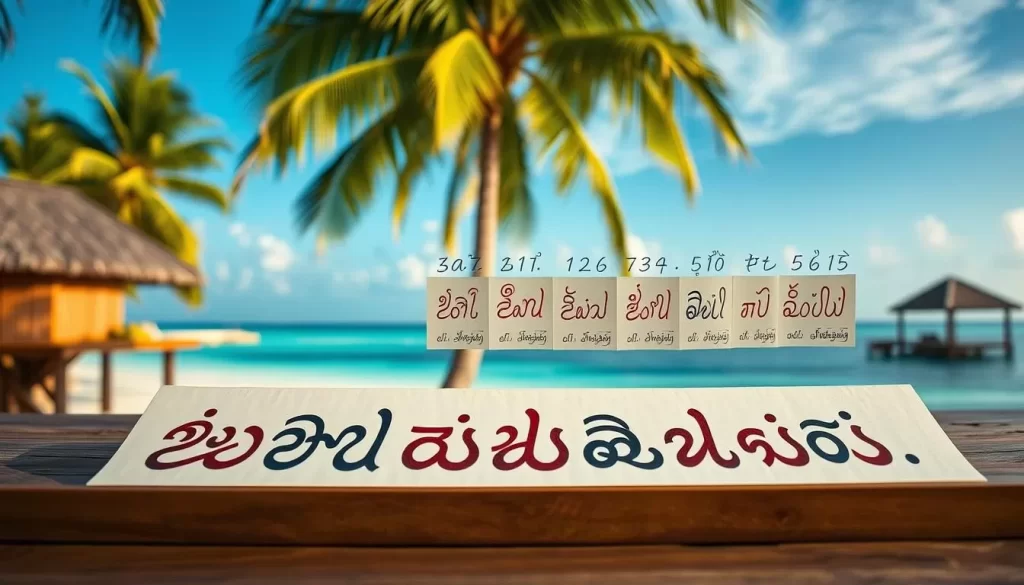
Origins and Development of Thaana
The Thaana script evolved from the ancient Dhives Akuru, adapting over centuries to meet the needs of its people. Introduced in the 16th century, it replaced older scripts and became the standard for written communication. This transition was influenced by Arabic, which played a significant role in shaping its structure.
One of the most distinctive features of Thaana is its right-to-left orientation. This unique characteristic sets it apart from other scripts in the area. The script includes 38 letters, derived from both Arabic numerals and local Indic numerals.
Transition from Dhives Akuru to Thaana and Malé Latin
In the mid-1970s, the Latin script was briefly adopted for telex communication. This shift was part of a broader effort to modernize written communication. However, the Thaana script was reinstated in 1978, reaffirming its importance in the nation’s cultural and administrative framework.
Government roles and educational initiatives have played a crucial part in standardizing the Thaana script. Today, it is taught in schools and used in all official documents, ensuring its preservation.
“The Thaana script is more than a writing system; it’s a symbol of our heritage and resilience.”
Here’s a quick overview of the Thaana script’s evolution:
| Period | Script | Influence |
|---|---|---|
| 6th-8th Century | Dhives Akuru | Local traditions |
| 16th Century | Thaana | Arabic numerals |
| 1970s | Malé Latin | Modernization |
| 1978-Present | Thaana | Standardization |
The Thaana script continues to thrive, reflecting the nation’s ability to adapt while preserving its cultural roots. Its evolution is a testament to the enduring influence of history and tradition.
Language Policies and Educational Initiatives
Language policies in this island nation reflect a balance between tradition and modernity. The government has taken significant steps to preserve Dhivehi while integrating English and Arabic into the educational system. These efforts ensure that the nation’s linguistic heritage remains vibrant while meeting global communication needs.
Government Roles and Language Law
The capital plays a central role in shaping language policies. Laws mandate the use of Dhivehi in public administration and education, ensuring its prominence in daily life. For example, official documents are written right to left in the Thaana script, reinforcing its cultural significance.
Government institutions also promote multilingualism. Initiatives like language academies and standardized curricula help maintain Dhivehi’s vitality. These efforts are complemented by policies that encourage the use of English and Arabic in specific contexts, such as tourism and religious education.
Integration of English and Arabic in Schools
Schools in the capital and beyond have embraced a multilingual approach. English is taught as a core subject, preparing students for global opportunities. Arabic is integrated into the curriculum, particularly in mosques and religious studies.
This dual focus ensures that students are proficient in both traditional and modern languages. For instance, the Thaana script is taught alongside English, highlighting the nation’s commitment to preserving its heritage while adapting to contemporary needs.
“Language is the bridge between our past and our future. By embracing multilingualism, we honor our heritage while preparing for global challenges.”
Here’s a quick overview of key language policies:
| Policy | Focus | Impact |
|---|---|---|
| Dhivehi Preservation | Public administration | Ensures cultural continuity |
| English Integration | Education and tourism | Enhances global communication |
| Arabic Education | Religious studies | Strengthens cultural identity |
These initiatives demonstrate the nation’s ability to balance tradition with modernity. By preserving Dhivehi and integrating English and Arabic, the country ensures its linguistic landscape remains dynamic and inclusive. For more insights into these policies, visit this resource.
Cultural Significance and Daily Life Language Use
Language shapes the rhythm of daily life, connecting people through shared traditions and expressions. From morning greetings to evening prayers, it is the heartbeat of cultural identity. Whether in schools, markets, or homes, language bridges generations and preserves heritage.
In this island nation, daily rituals are deeply intertwined with the way people communicate. For example, the traditional greeting “Assalaamu Alaikum” reflects the strong Islamic influence. This phrase is used in homes, schools, and community centers, fostering a sense of unity.
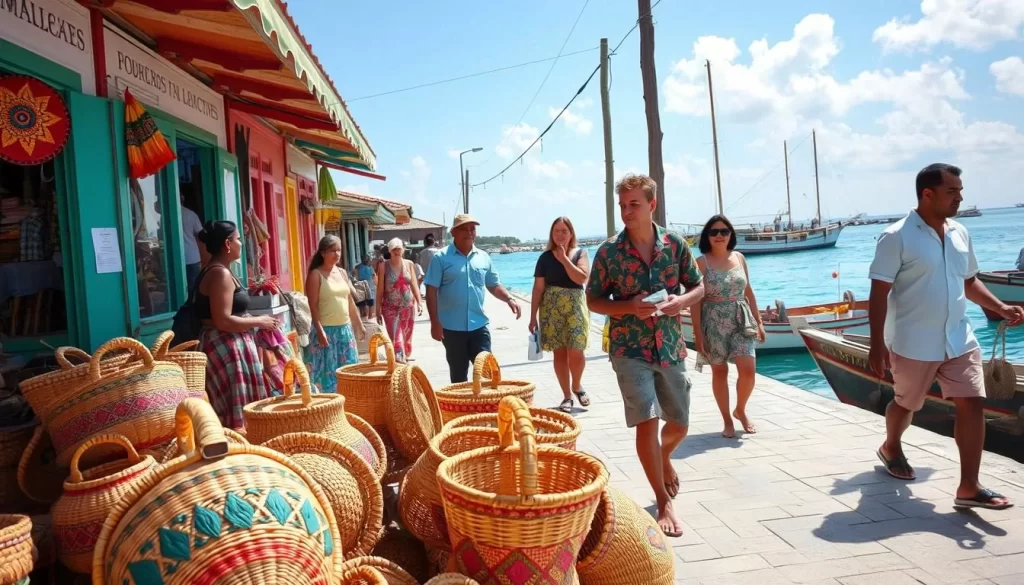
Storytelling, music, and art also play a vital role in keeping traditions alive. The Bodu Beru dance, accompanied by rhythmic drumming, is a popular cultural expression. Performances often include songs in Dhivehi, celebrating local history and values.
Schools are a key place where language thrives. Students learn Dhivehi, English, and Arabic, ensuring they are well-prepared for both local and global opportunities. This multilingual approach strengthens cultural identity while promoting inclusivity.
Community events, such as the Maahefun Festival, showcase the vibrant use of language. This celebration attracts thousands, highlighting the importance of cultural heritage. Festivals like these are a testament to the enduring role of language in bringing people together.
Here’s a quick look at how language is woven into daily life:
| Setting | Language Use | Cultural Impact |
|---|---|---|
| Schools | Dhivehi, English, Arabic | Preserves heritage, promotes global communication |
| Markets | Dhivehi, English | Facilitates trade, fosters community bonds |
| Festivals | Dhivehi, local dialects | Celebrates traditions, strengthens identity |
Language is more than a tool for communication; it is a cornerstone of cultural preservation. From formal education to informal gatherings, it plays a vital role in shaping community life. To learn more about the rich cultural tapestry of this nation, explore further resources.
Linguistic Influences and Loanwords in Dhivehi
The Dhivehi language is a vibrant tapestry woven with threads from diverse cultures. Over centuries, it has absorbed words and phrases from Arabic, Portuguese, and English, creating a unique linguistic blend. These influences reflect the nation’s history of trade, colonization, and global exchange.
One of the most fascinating aspects of Dhivehi is its loanwords. For example, the word “atoll” comes from the English language, while “dhoni” (a traditional boat) has roots in Tamil. These borrowed terms are seamlessly integrated into daily conversations, showcasing the language’s adaptability.
Arabic has had a profound impact, especially in religious and scientific contexts. Words like “algebra” and “mosque” are direct borrowings, reflecting the cultural and intellectual exchanges over time. Similarly, Portuguese influence is evident in terms like “mesa” (table), a remnant of colonial history.
For travelers, understanding these loanwords can enhance your experience. Knowing that “dhoni” refers to a boat or “atoll” describes the islands’ geography helps you connect with the local culture. It’s a small but meaningful way to appreciate the linguistic richness of your destination.
“Language is the bridge between cultures. By learning a few words, you open doors to deeper connections.”
Here’s a quick guide to some common loanwords in Dhivehi:
| Word | Origin | Meaning |
|---|---|---|
| Atoll | English | Ring-shaped coral island |
| Dhoni | Tamil | Traditional boat |
| Mesa | Portuguese | Table |
| Mosque | Arabic | Place of worship |
As a visitor, you’ll notice how these words are used in everyday life. Whether you’re exploring the islands or chatting with locals, recognizing these terms adds depth to your journey. For more insights into Dhivehi’s linguistic heritage, check out this informative article.
In conclusion, Dhivehi’s lexicon is a testament to its global connections. From ancient trade routes to modern tourism, each borrowed word tells a story. As you travel, take a moment to appreciate the linguistic diversity that makes this nation so unique.
Maldives: Official and widely spoken languages
The linguistic landscape of this island nation is shaped by its official language and global influences. Dhivehi, with its Indo-Aryan origin, is the cornerstone of communication, used in government, education, and daily life. Its unique script called Thaana, written from right to left, reflects centuries of cultural adaptation.
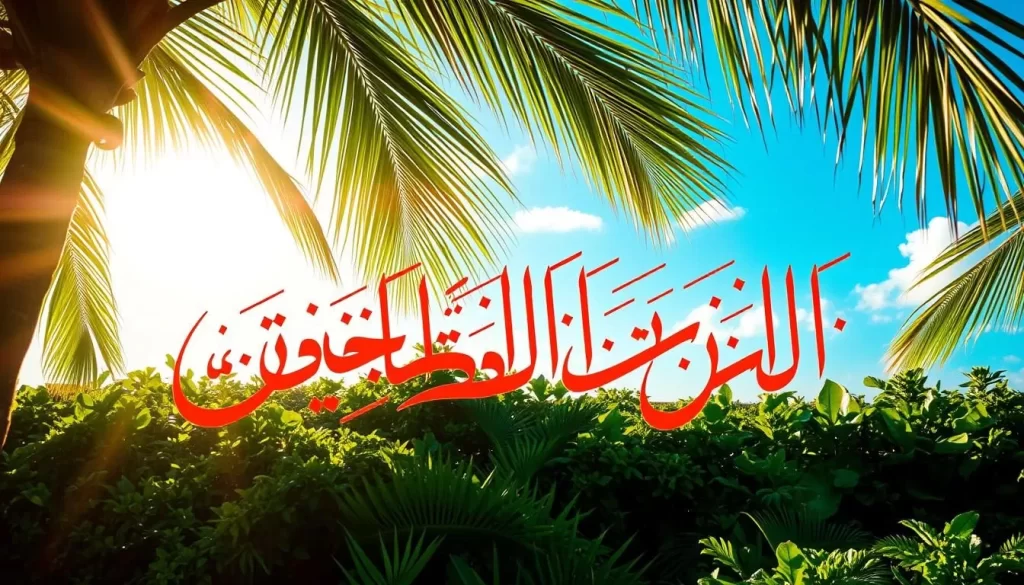
Official Status and Regulatory Framework
Dhivehi’s official status is reinforced by national laws and institutions like the Dhivehi Language Academy. This body ensures the language’s standards are maintained, especially in public posts and official documents. The academy also promotes linguistic research, preserving the language’s Indo-Aryan family heritage.
Government communication primarily uses Dhivehi, with English translations often provided for tourists. This dual approach ensures accessibility while preserving cultural identity.
Tourism, Media, and Global Communication
Tourism has significantly influenced language dynamics. English is widely used in resorts, schools, and media, making it the unofficial second language. Signs, menus, and informational materials in tourist areas are frequently available in English, ensuring visitors feel welcome.
Media outlets balance Dhivehi and English content, catering to both local and international audiences. This approach highlights the nation’s ability to adapt to global communication trends while honoring its linguistic origin.
| Sector | Primary Language | Secondary Language |
|---|---|---|
| Government | Dhivehi | English |
| Tourism | English | Dhivehi |
| Education | Dhivehi | English, Arabic |
For more insights into the Maldives’ official language, explore this detailed resource. The balance between tradition and modernity ensures the linguistic landscape remains vibrant and inclusive.
Practical Language Guide for Visitors
Exploring the local language can transform your travel experience, making interactions more meaningful and authentic. Learning a few key phrases in Dhivehi and Arabic can help you connect with locals and navigate daily life with ease.
Essential Phrases in Dhivehi and Arabic
Here are some essential phrases that will come in handy during your visit. These expressions are commonly used in greetings, dining, and everyday conversations:
| Phrase | Dhivehi | Arabic |
|---|---|---|
| Hello | Assalaamu Alaikum | Marhaba |
| Thank You | Shukuriyaa | Shukran |
| Goodbye | Dhanee | Ma’a as-salaama |
| How much is this? | Eh kihaavareh? | Bikam haadha? |
| Where is the restroom? | Faalhu kobaitha? | Ayna al-hammam? |
Knowing these phrases can enhance your experience, especially when ordering food or asking for directions. It shows respect for the local culture and helps you navigate with confidence.
Tips for Engaging with Local Communities
Engaging with local communities can enrich your travel experience. Here are some practical tips to help you connect with locals:
- Practice Basic Phrases: Even a few words in Dhivehi or Arabic can go a long way in building rapport.
- Be Respectful: Always greet people with a smile and use polite expressions like “Shukuriyaa” (Thank You).
- Learn About Local Customs: Understanding cultural norms, such as removing shoes before entering a home, can help you blend in.
- Ask Questions: Locals appreciate when visitors show interest in their culture and traditions.
For example, when dining, it’s common to eat with your right hand, as the left hand is considered unclean. This small gesture can make a big difference in how you are perceived.
“Language is the key to understanding culture. By embracing a few local phrases, you open doors to deeper connections and richer experiences.”
For more insights into the cultural practices and etiquette of this island nation, explore this informative guide. Understanding these nuances can help you make the most of your visit and create lasting memories.
Conclusion
Understanding the linguistic diversity of this island nation offers a window into its rich cultural heritage. The evolution of Dhivehi, with its unique Thaana script, stands as a stone of cultural identity, reflecting centuries of adaptation. Tourism has further shaped language dynamics, making English a bridge for global communication.
Language plays a vital role in uniting community members, preserving traditions while embracing modern influences. From local dialects to global interactions, it fosters a sense of belonging. This blend of old and new ensures the nation’s linguistic landscape remains vibrant.
As you explore, take time to appreciate this diversity. It’s a case of how language connects people across generations and cultures. For deeper insights, visit this resource on the island’s linguistic heritage.
The above is subject to change.
Check back often to TRAVEL.COM for the latest travel tips and deals.
Here are some Tours & Sightseeing suggestions that might pique your interests!
